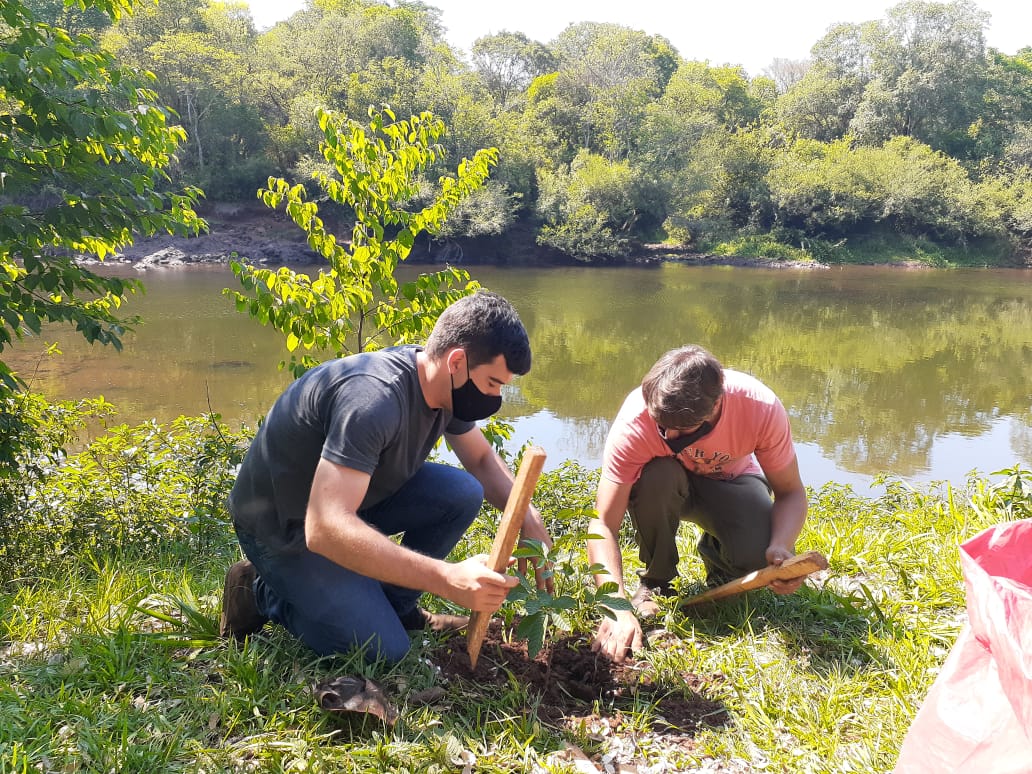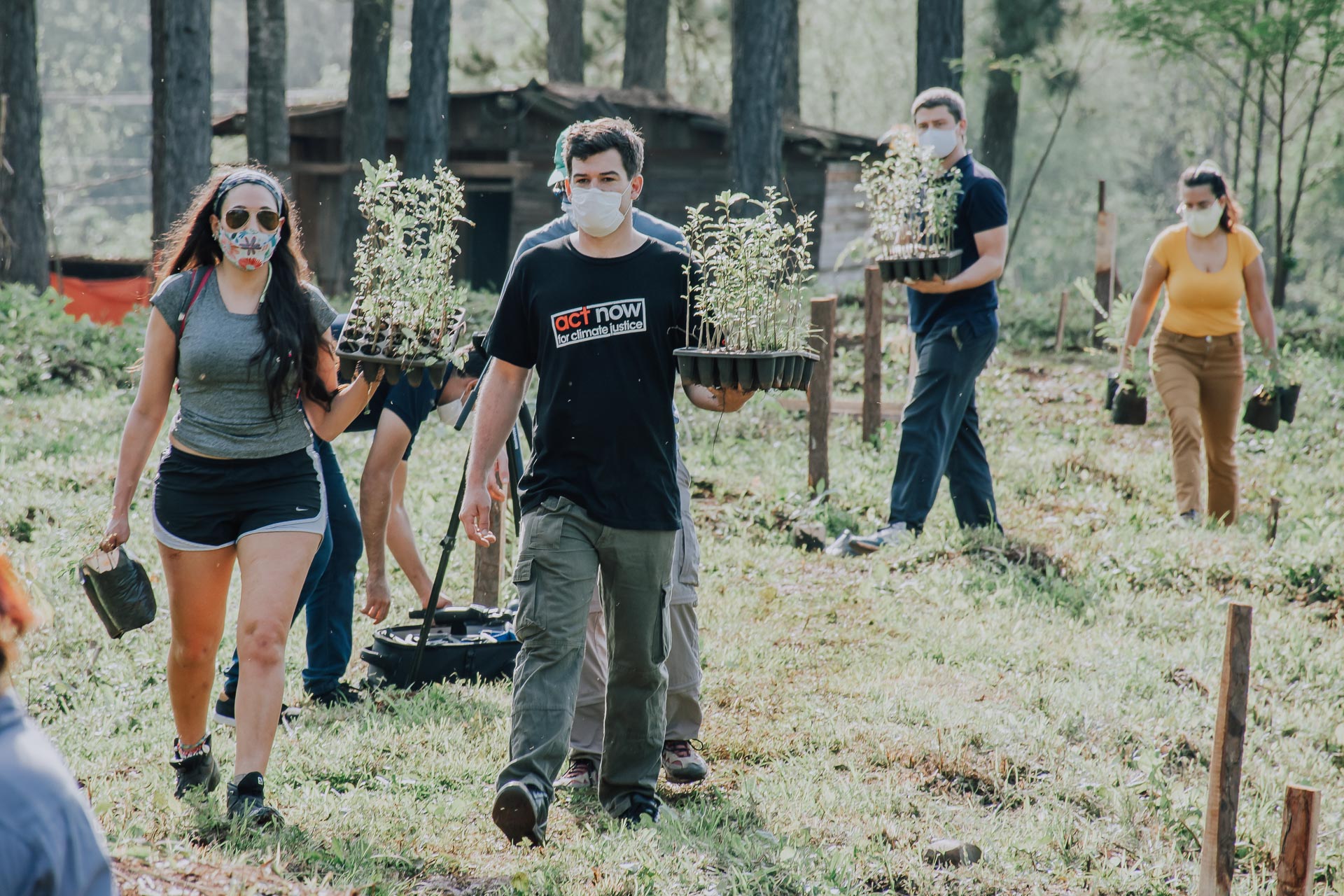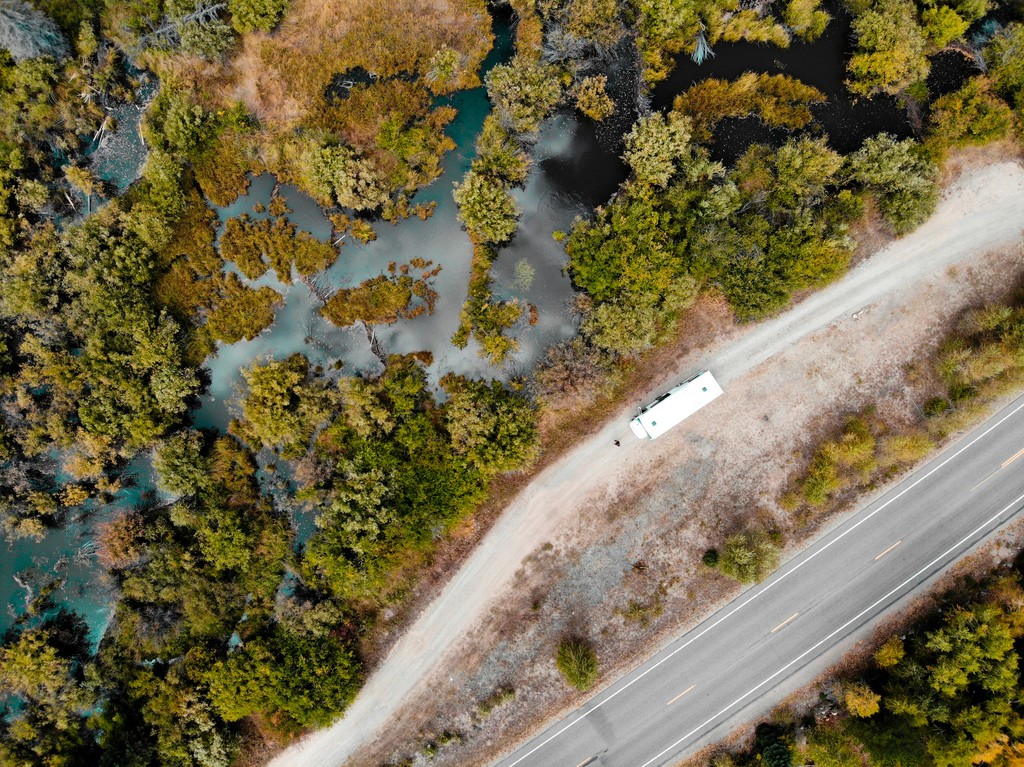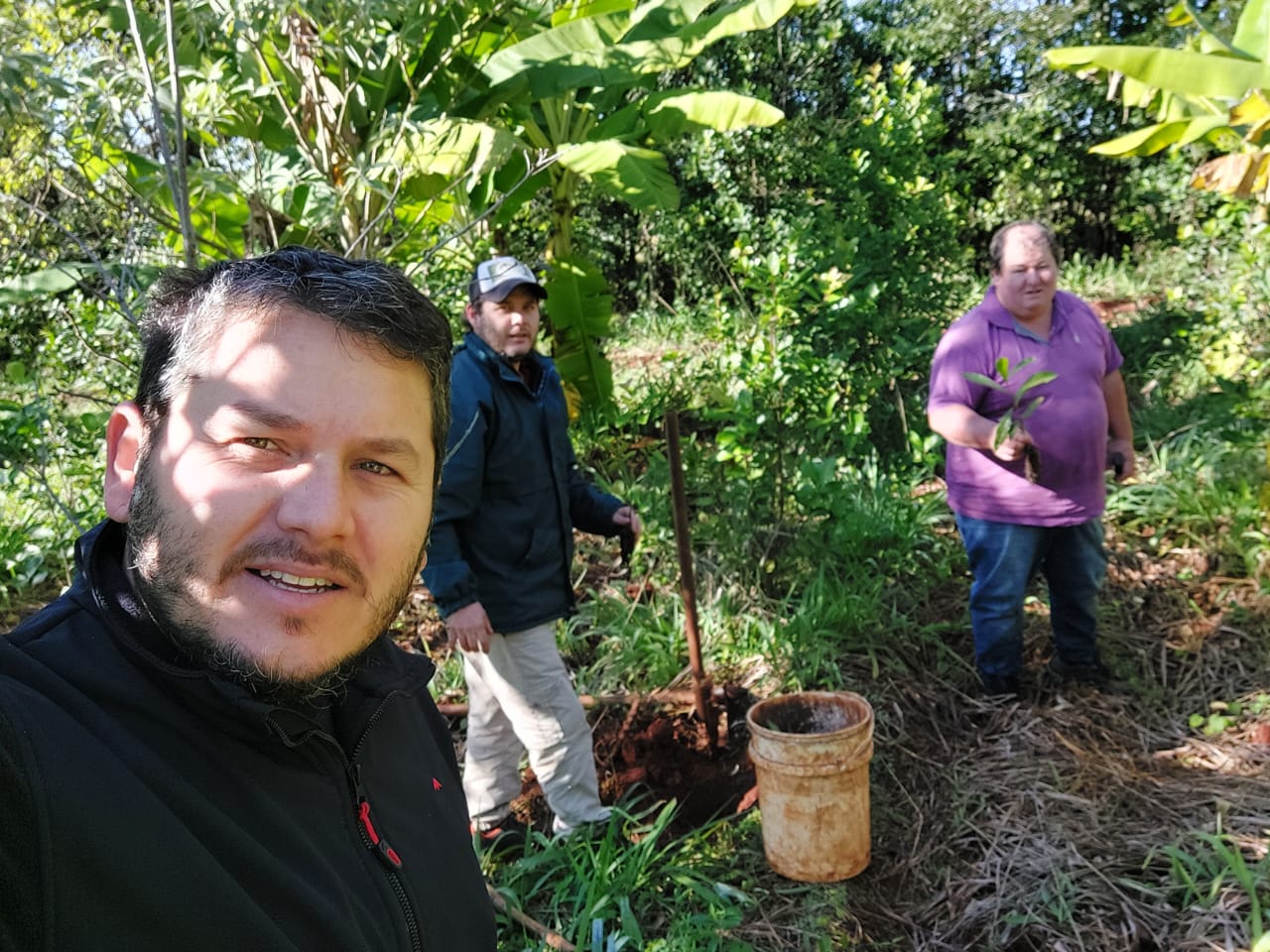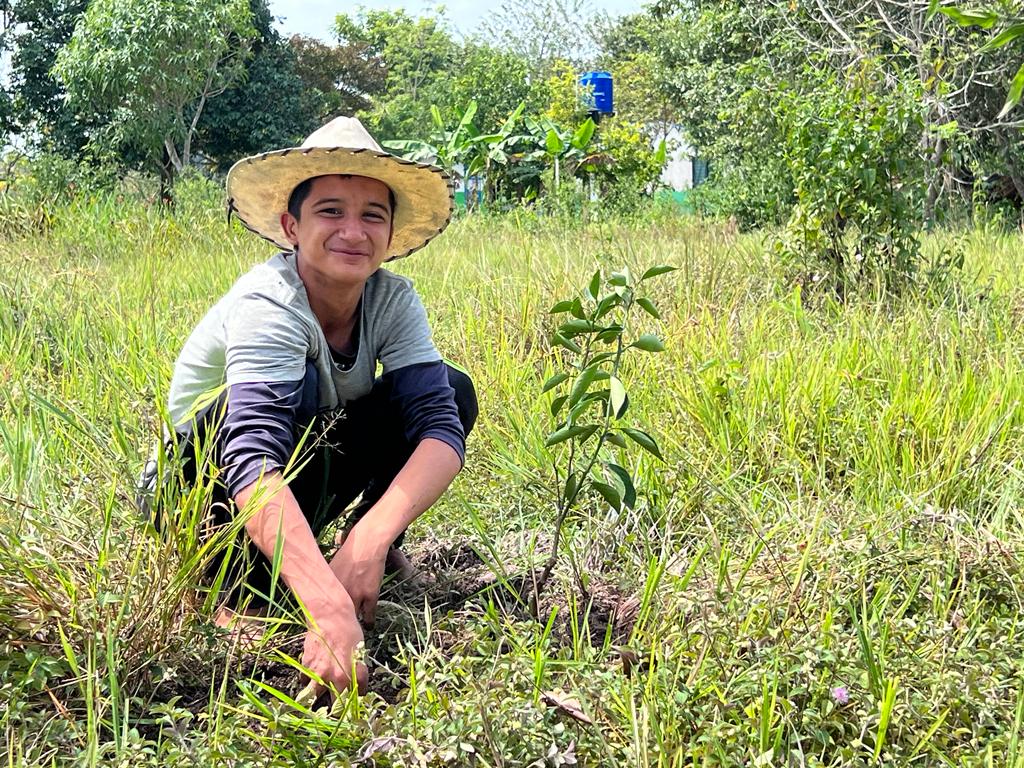Compilation of Climate Justice Advocacy
Good Practices of Local to Global Action
PROJECT DURATION
January 2020 to December 2022
BUDGET AND FUNDING
EUR 173,000, with 85% coming from Bread for the World and several individual donors.
SNAPSHOT
A total of 310 initiatives aimed at raising awareness successfully sensitized 1,813 individuals from 39 different municipalities. The Crece Selva Misionera initiative addressed adaptation, mitigation, and climate justice activity. The project was implemented by the Protestant foundation Hora de Obrar, which is an initiative from the Evangelical Church of the River Plate that focuses on the social and environmental development of Argentina, Uruguay, and Paraguay.
IMPLEMENTATION
Foundation Hora de Obrar
The project was implemented in Misiones, a province situated in the Río de la Plata basin, an area abundant in wetlands, streams, and rivers.
These ecosystems were significantly impacted by an intensified drought, attributed to climate change and resulting in detrimental effects on biodiversity, the environment, and public health.
The forestry situation in the region is highly concerning.
The prolonged period of severe drought, lasting twenty-two months from 2020 onward, led to a substantial decrease in water levels of the Paraná and Uruguay rivers, as well as numerous forest fires and the loss of hundreds of hectares of forested land.
This situation served as an alarming indicator of the ongoing environmental crisis in the region and posed an unprecedented threat to biodiversity.
The project was highly relevant for a context severely affected by droughts and forest fires. It successfully regenerated 395 hectares of land in the Misiones province through the strategic planting of 178,000 trees along watercourse banks and fields.
These trees primarily consisted of native species, including fruit-bearing varieties. Additionally, it increased the demand for native plants within the province, leading to a positive impact on the production of nurseries specialized in cultivating these species.
Moreover, the project promoted a large-scale advocacy campaign incorporating social media coverage with international recognition and achieved wide results through a solid network.
Finally, it facilitated educational workshops that raised awareness of the detrimental effects of climate change and deforestation.
Biodiversity conservation and restoration
Community education, awareness raising, and capacity-strengthening
Climate justice encompasses the principles of inclusivity and consideration of diverse stakeholders, especially vulnerable communities, in decision-making and actions concerning climate change.
The Evangelical Church of the River Plate commenced community works in Misiones by reaching out to rural producers, Mbyá Guaraní indigenous communities, local governing bodies, nongovernmental organizations, and educational institutions, among others.
A total of 310 awareness-raising initiatives have taken place, involving the participation of 1,813 individuals from 39 distinct municipalities. These actions addressed various subjects, including the impacts of climate change and the significant role that conservation and reforestation play in fostering environmental consciousness.
They aimed to enhance understanding of the Misiones jungle, its ecological functions, and its interconnection with the environment and climate change.
Multistakeholder approach
The Misiones jungle represents an ecosystem abundant in biodiversity and serves as a haven for a diverse range of flora and fauna, playing a critical role in the preservation of biodiversity. The unique benefits of this ecosystem only emphasize the importance of safeguarding its natural heritage.
The project recognizes the vital role of biodiversity preservation in fortifying the resilience of ecosystems amid ongoing challenges. Through the preservation of native plant and animal species inhabiting the Misiones jungle, the project actively contributes to reinforcing the ecosystem’s capacity to adjust and endure the impacts of climate change.
“We have cultivated approximately forty-nine diverse species, including those suitable for timber production as well as medicinal and fruit-bearing varieties, tailored to meet specific demands. Furthermore, endangered species have been intentionally introduced to safeguard biodiversity and protect species at risk of extinction." (Romario Dohmann, project coordinator)
The project successfully restored and reforested a total area of 395 hectares within the Misiones jungle, making a valuable contribution toward carbon capture and climate change mitigation. Moreover, the restoration of the ecosystem brought socioeconomic advantages to local communities, through the cultivation of fruit and medicinal species.
“For our agroforestry, the reforestation project allowed us to bring biodiversity to our farm, enriching cultivation areas with timber, fruit, and honey species. Undertaking these actions has enhanced the resemblance to our original forests.” (Sergio Ott, agroecological producer in San Vicente)
“Due to the persistent and prolonged drought, we were forced to reduce the planting windows down to a span of months to ensure the survival of the plants. Additionally, we implemented novel techniques such as incorporating hydrogel with the plantations, which, when combined with root moisture, provided plants extended durability without compromising on affordability, safety, or ecology.” (Romario Dohmann, project coordinator)
The objective of the project was to implement carbon fixation, combat water erosion, and integrate trees into the productive areas situated between the “yerbales” and farms. These ambitions aimed to reduce temperature levels and prevent direct exposure of plantations to sunrays.
“One of the primary concerns from the drought was the significant impact of high temperatures on the short lifespan of numerous valuable crops, including tea, cassava, and squash. Consequently, employing agroforestry systems aided in mitigating such risks by reducing temperatures and minimizing the likelihood of plantation losses. With this adaptation approach, we effectively modified the productive areas to tackle new climatic scenarios.” (Romario Dohmann, project coordinator)
The project embraced a comprehensive multistakeholder approach by engaging diverse communities, associations, and government entities to ensure both its success and long-term viability.
Among the contributors were the National Institute of Agricultural Technology (INTA), the National Institute of Yerba Mate (INYM), park rangers, the Municipality Ruiz de Montoya, the 2 de Mayo cooperative, and several universities. Additionally, the project actively collaborated with local producers and native Mbyá-Guaraní communities.
Through strategic advocacy efforts, including active involvement in the Trinational Network for Atlantic Forest Restoration, the organization established itself as a significant stakeholder in Argentina, Paraguay, and Brazil.
As a testimony to its impact, the United Nations recognized the Atlantic Forest biome as deserving special protection in 2020, acknowledging the project’s role in this achievement.
Local to Global to Local Approach
“Our primary focus lies in the local sphere, prioritizing communities and their specific needs. Once our project was established and progress made, we expanded our reach globally, by seeking connections with others. An instance of this is our collaboration with the Trinational Network for Atlantic Forest Restoration in Argentina, Paraguay, and Brazil. We have held multiple meetings, and our project received recognition in 2022 during the United Nations restoration decade and the Conference of Parties 15 in Montreal. We are proud to be counted among the top ten initiatives recognized for promoting good restoration practices.” (Romario Dohmann, Coordinator of Crece Selva Misionera)
The project employed an inclusive approach toward gender, Indigenous communities, and individuals with disabilities, while also actively encouraging the participation of young people.
Historically, reforestation has been perceived as the domain of men. To address this, the project deliberately sought to involve women more explicitly in the process. During mass awareness campaigns and reforestation efforts, women actively engaged in collaborative and communal tree-planting.
When working with children and adolescents in schools, the focus was placed on aiming to transcend gender-based roles, empowering younger generations to approach the work from a broader perspective. These initiatives represent the initial steps toward dismantling rigid gender roles that have governed the project’s activities so far.
Although men predominated in project participation, the gender disparity was minimal. In the most recent phase, men accounted for 55.5% of those sensitized, while women comprised the remaining 44.5%, highlighting the conscious effort to increase female involvement.
The dedication to reforestation practices has fostered a stronger bond with the local indigenous communities, as the Mbyá-Guaraní people share a similar worldview, that prioritizes the preservation and restoration of the native forest.
As part of the inclusivity approach, tree-planting initiatives were undertaken at a hospital in Posadas, where braille signs were installed and, twice a year, large-scale planting events were organized, with an attendance ranging from 60 to 100 individuals. An open invitation was extended to anyone interested, of which 75% of the participants were under the age of thirty.
1.
The project targeted and engaged 300 producers.
2.
A restoration effort covered 395 hectares within the Misiones jungle.
3.
An alliance was established with six nurseries producing native species.
4.
Demand for native plants within the province increased, positively impacting the production of specialized nurseries.
5.
This project has enabled the organization to establish itself as a leading authority in provincial reforestation endeavors.
6.
Participation in the Trinational Network for Atlantic Forest Restoration positions the organization as a significant stakeholder in Argentina, Paraguay, and Brazil.
7.
The United Nations recognized the region as one of the biomes deserving protection in 2020.
8.
The province of Chaco initiated necessary processes to expand the project’s reach into its territory, ensuring not only its continuation but also an extension into new areas.
9.
Media coverage increased on reforestation issues, fostering discussions within various sectors of the population that previously overlooked such proposals.
10.
Participation and ownership of the project were taken by Mbyá-Guaraní native communities, ensuring a multistakeholder approach and project sustainability.


